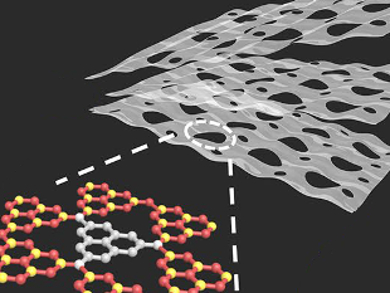Semiconductor photocatalysis is widely used in environmental and energetic applications, e.g., for the photocatalytic degradation of pollutants and for photocatalytic hydrogen generation using solar energy.
Among various photocatalysts, graphitic carbon nitrite (g-C3N4) shows potential with features such as environmental friendliness, low cost, good stability, and excellent optical and electronic properties. Limitations in the use of g-C3N4 are the high recombination rate of photo-induced electron-hole pairs, a low specific surface area, and limited active sites.
Yan Xing, Northeast Normal University, Changchun, China, Shuyan Song, Changchun Institute of Applied Chemistry, China, and colleagues prepared holey ultra-thin g-C3N4 nanosheets with abundant micro-, meso-, and macropores. They synthesized the material by self-modification of polymeric units through long-time thermal treating at 520 °C under a weakly oxidizing atmosphere.
The resulting holey g-C3N4 nanosheets exhibit superior performance in hydrogen generation and in the photocatalytic degeneration of pollutants. The enhancement is due to a larger surface area and more active sites. Furthermore, the structure benefits the electron-transport ability and rapid cross-plane diffusion of photogenerated carriers.
- Macroscopic Foam-Like Holey Ultrathin g-C3N4 Nanosheets for Drastic Improvement of Visible-Light Photocatalytic Activity,
Yunfeng Li, Renxi Jin, Yan Xing, Junqi Li, Shuyan Song, Xianchun Liu, Mei Li, Rongchao Jin,
Adv. Energy Mater. 2016.
DOI: 10.1002/aenm.201601273




